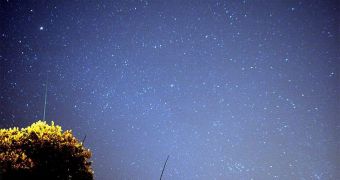Each year sees about 20 meteor showers occurring all around the world, of which a select few are easily visible in the night sky. For December, the Geminid shower is the most famous, but it's not the only one. Late December always sees the peak of the Ursid meteor shower, which will occur tonight.
Astronomers and skywatchers alike are eager to see this year's final meteor shower. Though it began around December 17, the event will not peak until tonight, December 22. Unfortunately, this event doesn't get nearly as much attention as its counterpart, the Geminid.
For those of you who are interested in seeing this night's event, it will help to know that their apparent point of origin is the bright orange star Kochab, which is located in the renowned constellation Ursa Minor, also known as the Little Bear.
All meteors will appear as if they are fanning out from this particular point, Space reports. Kochab is accompanied by Pherkad in the bowl of the Little Dipper, and the two can be seen in the night sky around the North Star, Polaris. In fact, they appear to be guarding it.
One of the implications of this cosmic setup is that people from the Southern Hemisphere cannot hope to see this meteor shower. The star around which they appear to originate only rarely sets for the Northern Hemisphere, which makes the space rocks visible from Europe, the US, Canada and Asia.
The meteor it will bring to Earth are traveling at medium speeds, and are rather faint, so a pair of good astronomy binoculars will not hurt if you want to track them. They will be visible throughout the entire night, but only if you position your observation post in a place that lacks light pollution.
For those of you who know a thing or two about observing the sky, it may also be worthwhile to know that all other planets in the solar system will be visible in the night sky this week.
Other than Uranus and Neptune, which will only be visible if using telescopes, Mercury, Venus, Mars, Jupiter and Saturn will be apparent to the naked eye. This is due to a rare planetary configuration that has all the other planets on Earth's night side at the same time.
The Ursids are the dusty debris that comet Tuttle 8P/Tuttle leaves behind after passing through the inner solar system, once every 13.6 years. The last time this happened was in 2008. At its peak, tonight’s meteor shower will produce about 12 shooting stars per hour, Space reports.

 14 DAY TRIAL //
14 DAY TRIAL //